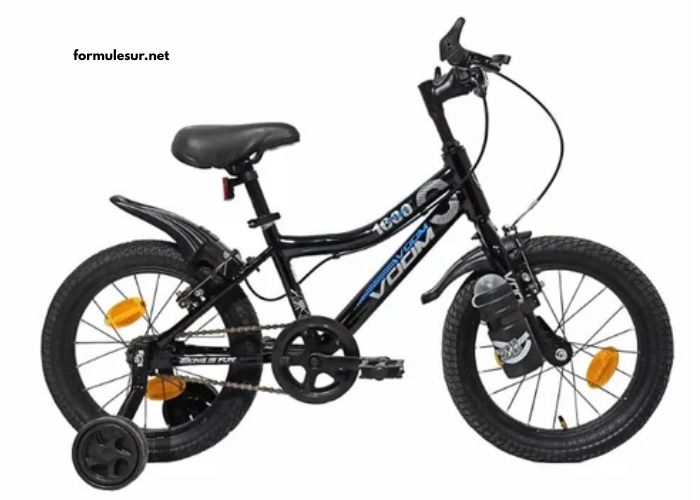In today’s fast-paced world, stress has become an inevitable part of daily life. Whether it’s due to work, relationships, financial pressures, or health concerns, chronic stress can lead to serious mental and physical health issues. Fortunately, there is a powerful, science-backed way to combat stress and reclaim your well-being—mindfulness.
Mindfulness is not just a trend; it’s a life-changing practice rooted in ancient traditions and supported by modern psychology. In this comprehensive guide, we’ll explore how mindfulness practices can lead to stress-free living, improve your quality of life, and help you thrive in a chaotic world.
What is Mindfulness?
Mindfulness is the practice of being fully present in the moment, paying attention to your thoughts, emotions, bodily sensations, and environment without judgment. It involves conscious awareness and acceptance, helping individuals become more connected with themselves and their surroundings.
According to Jon Kabat-Zinn, the pioneer of mindfulness-based stress reduction (MBSR), mindfulness means “paying attention in a particular way: on purpose, in the present moment, and nonjudgmentally.”
The Link Between Mindfulness and Stress Reduction
Stress often stems from ruminating on the past or worrying about the future. Mindfulness brings your attention to the present, which naturally reduces anxiety and promotes calmness.
Scientific Evidence
Numerous studies have shown that practicing mindfulness can:
-
Lower cortisol levels (the body’s primary stress hormone)
-
Reduce symptoms of anxiety and depression
-
Improve sleep quality
-
Enhance emotional regulation
-
Strengthen the immune system
A 2010 meta-analysis published in the Journal of Clinical Psychology found that mindfulness practices significantly reduce symptoms of stress and anxiety across diverse populations.
Benefits of Mindfulness Practices
1. Improved Mental Clarity and Focus
When you’re present, your concentration sharpens. Mindfulness reduces the brain’s tendency to multitask, allowing you to engage more effectively in any activity.
2. Emotional Resilience
By observing your thoughts and feelings without judgment, you develop greater emotional intelligence and resilience to life’s ups and downs.
3. Better Physical Health
Mindfulness has been linked to lower blood pressure, improved digestion, better sleep, and reduced chronic pain—leading to a healthier, more balanced life.
4. Enhanced Relationships
When you’re mindful, you listen deeply and respond rather than react. This can strengthen personal and professional relationships through empathy and presence.
Mindfulness Practices for Everyday Life
You don’t need to be a monk or meditate for hours to benefit from mindfulness. Here are practical techniques anyone can incorporate into their daily routine.
H2: 1. Mindful Breathing
Mindful breathing is the cornerstone of mindfulness practice. It brings your focus back to your breath, helping to calm the nervous system.
How to Practice:
-
Sit comfortably and close your eyes.
-
Inhale deeply through your nose for 4 seconds.
-
Hold for 2 seconds.
-
Exhale slowly through your mouth for 6 seconds.
-
Focus your attention solely on your breath. If your mind wanders, gently bring it back.
Duration: Start with 5–10 minutes per day and increase gradually.
H2: 2. Body Scan Meditation
This technique enhances awareness of bodily sensations and releases physical tension.
Steps:
-
Lie down or sit in a quiet space.
-
Starting from your toes, slowly shift your attention through different parts of the body.
-
Notice sensations—warmth, tightness, tingling—without judgment.
-
Breathe into each area as you go.
Pro Tip: Use a guided body scan meditation app to assist you.
H2: 3. Mindful Walking
You can practice mindfulness even while walking.
How to Walk Mindfully:
-
Walk at a comfortable pace.
-
Focus on the sensation of your feet touching the ground.
-
Observe your surroundings—sounds, smells, sights.
-
Breathe naturally and stay present.
Walking mindfully in nature enhances the calming effect by connecting you to the Earth.
H2: 4. Mindful Eating
In a world of fast food and distracted dining, mindful eating can transform your relationship with food and reduce stress-related eating behaviors.
How to Eat Mindfully:
-
Eat without distractions (no phone or TV).
-
Take small bites and chew thoroughly.
-
Notice the flavors, textures, and aroma of each bite.
-
Express gratitude for the food on your plate.
This helps prevent overeating and supports digestion.
H2: 5. Loving-Kindness Meditation (Metta)
This powerful practice cultivates compassion—for yourself and others. It helps reduce negative emotions, such as anger, jealousy, and resentment.
How to Practice:
-
Sit comfortably and breathe deeply.
-
Silently repeat affirmations like:
-
“May I be happy.”
-
“May I be safe.”
-
“May I live with ease.”
-
-
Extend the same wishes to others: loved ones, acquaintances, even those you may struggle with.
H2: 6. Mindfulness Journaling
Writing helps clarify your thoughts and deepen self-awareness.
How to Journal Mindfully:
-
Set aside 10 minutes a day.
-
Write about your current thoughts and feelings.
-
Reflect on moments of gratitude or insight.
-
Avoid editing—just let your thoughts flow naturally.
Over time, this builds emotional awareness and resilience.
Incorporating Mindfulness Into Your Daily Routine
Mindfulness doesn’t require special tools or settings. You can integrate it into regular activities like brushing your teeth, driving, or doing dishes.
H3: Morning Ritual
Start your day with a few minutes of deep breathing or a gratitude affirmation to set a positive tone.
H3: Midday Reset
Take mindful pauses throughout your workday. A short walk or breathing session can reboot your focus.
H3: Evening Wind Down
Turn off screens an hour before bed. Reflect on your day or do a short meditation to ease into sleep.
Common Challenges and How to Overcome Them
H3: “I Don’t Have Time”
Even 5 minutes of mindfulness a day can make a difference. Start small—during your commute, shower, or lunch break.
H3: “My Mind Keeps Wandering”
That’s natural! The goal isn’t to stop thoughts but to notice them and return to the present moment gently.
H3: “I Can’t Sit Still”
Try movement-based practices like yoga, walking meditation, or tai chi.
Tools and Resources to Support Your Practice
There are many apps and resources that can help you stay consistent:
-
Headspace – Offers guided meditations for stress, sleep, and focus.
-
Calm – Great for sleep stories, breathing exercises, and mindfulness programs.
-
Insight Timer – Free meditations from global teachers.
-
10% Happier – Mindfulness for skeptics, led by journalist Dan Harris.
Books to consider:
-
The Miracle of Mindfulness by Thich Nhat Hanh
-
Wherever You Go, There You Are by Jon Kabat-Zinn
Mindfulness in the Workplace
Modern workplaces are embracing mindfulness to boost employee productivity, reduce burnout, and enhance focus.
H3: Tips for Practicing at Work
-
Begin meetings with a 1-minute breathing exercise.
-
Use “mindful minutes” between tasks to avoid overwhelm.
-
Create a quiet space for short meditation breaks.
Companies like Google, Intel, and Apple have incorporated mindfulness programs with remarkable results.
The Long-Term Impact of a Mindful Lifestyle
When practiced regularly, mindfulness rewires your brain to respond to stress with calmness rather than panic. It enhances your prefrontal cortex (responsible for decision-making) and reduces activity in the amygdala (the brain’s fear center).
Life Changes You May Notice:
-
Greater inner peace and patience
-
Improved self-awareness and emotional balance
-
More intentional actions and decisions
-
A deeper connection to yourself and others
Final Thoughts: Embrace Mindfulness for a Better Life
Mindfulness isn’t about perfection—it’s about presence. Whether you’re facing challenges or enjoying moments of joy, mindfulness allows you to fully experience life without being overwhelmed by it.
By consistently practicing mindfulness, you can reduce stress, improve your health, and build a life of clarity, calm, and conscious living. Start with small steps, and over time, those moments of presence will become a way of life.
FAQs About Mindfulness Practices
Q1: How long does it take to see results from mindfulness?
Most people notice benefits within a few weeks of consistent practice, even just 10 minutes a day.
Q2: Can mindfulness replace therapy or medication?
Mindfulness is a complementary tool and not a substitute for professional help. It works best in combination with therapy or medical advice when needed.
Q3: Is mindfulness religious?
No. While it has roots in Buddhism, modern mindfulness is secular and science-based, making it accessible to all.
Q4: Can children and teens practice mindfulness?
Absolutely! Mindfulness can help young people manage emotions, improve focus, and develop resilience.
Optimize Your Life With Mindfulness
Embracing mindfulness is one of the most powerful steps you can take toward a stress-free, meaningful life. Whether you’re a beginner or have some experience, the journey begins with a single mindful breath.





